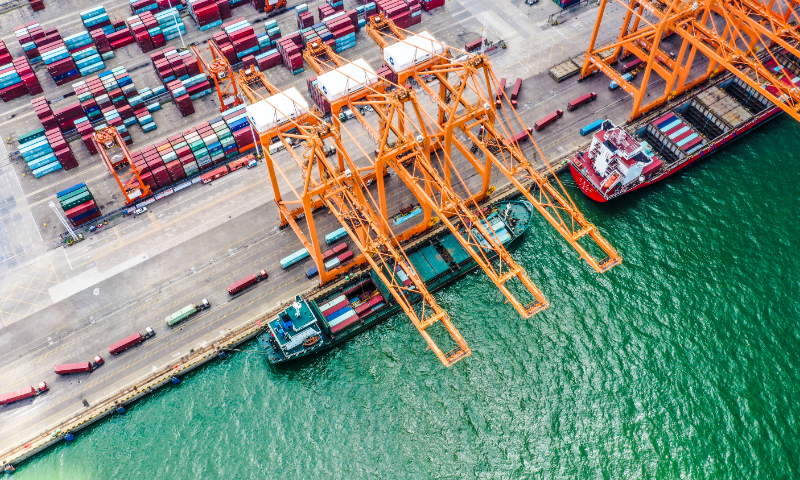Western China-ASEAN trade corridor sees robust growth in volume, pace

The 2,000th rail-sea intermodal train of 2024, running along the New International Land-Sea Trade Corridor, departed from Qinzhou, South China's Guangxi Zhuang Autonomous Region to Chengxiang, Southwest China's Sichuan Province on Sunday.
The trip marked a 16.8 percent year-on-year rise in the number of combined trains year-to-date and indicated that the 2024 first-quarter goals were achieved 14 days ahead of schedule, two facts that signal a successful start to the year, state broadcaster CCTV reported on Sunday.
The train, with 108 containers, carried black sesame from Myanmar, coconut juice from South China's Hainan Province and sugar from Guangxi, among other goods.
As of Friday, the land-sea corridor's extensive network had reached 149 stations in 18 provincial-level regions across China, five more than in January.
The rapid development of the corridor, a trade and logistics passage launched in 2017 and jointly built by provincial-level regions in western China and ASEAN members, shows the growth potential of provinces in the Chinese hinterland and reflects China's robust foreign trade growth in the first two months of the year, despite the complex international situation and rising protectionist headwinds, analysts noted.
The increase in the freight volume of the trade corridor reflects the prosperous trend of economic development in western China, said Bai Ming, a research fellow at the Chinese Academy of International Trade and Economic Cooperation.
Bai said that the result shows that trade between Regional Comprehensive Economic Partnership (RCEP) members and China has become more optimized, and the China-Laos Railway is also boosting trade cooperation between China and RCEP members.
The trade corridor has continuously optimized its supply structure and service scope this year, bringing many opportunities to regions along the route and driving their economic development, Bai noted.
In terms of seaborne trade under the corridor, 20,539 20-foot equivalent unit (TEU) containers of goods were transported from the Beibu Gulf Port in Guangxi, a surge of 36 percent year-on-year. RCEP member countries shipped 11,023 TEUs via the corridor from January 1 to March 10, increasing 35 percent year-on-year.
ASEAN remained China's largest trading partner in the first two months of 2024, with bilateral trade of 993.24 billion yuan ($139.88 billion), up 8.1 percent year-on-year, customs data showed on March 7.